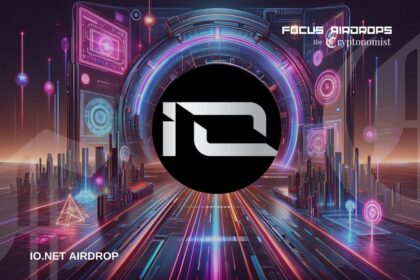The emergence of decentralized finance (DeFi) has revolutionized the financial landscape, offering innovative ways to manage and grow wealth without the need for traditional banks or intermediaries. One of the most popular and accessible strategies within DeFi is staking—a method that allows cryptocurrency holders to earn passive income while supporting the security and functionality of blockchain networks. This comprehensive guide delves into DeFi staking, exploring how it works, its benefits, risks, and the steps to get started.
What Is DeFi Staking?
DeFi staking involves locking up cryptocurrency assets in a blockchain protocol to earn rewards, usually in the form of additional tokens. Unlike traditional investments, staking leverages the unique mechanisms of blockchain technology, particularly proof-of-stake (PoS) and its variants, to validate transactions and secure networks.
In simpler terms, staking is akin to earning interest on a savings account, but instead of depositing money in a bank, you’re locking cryptocurrency in a decentralized network. The rewards you earn come from network fees, token issuance, or other incentives offered by the protocol.
How Does DeFi Staking Work?
To understand DeFi staking, it’s essential to grasp the basics of blockchain consensus mechanisms, particularly PoS. Here’s a breakdown of the process:
- Locking Assets: Users deposit their cryptocurrency into a staking contract on a blockchain network or DeFi platform. These locked assets contribute to the network’s security and operational efficiency.
- Validating Transactions: In PoS systems, validators are chosen to create new blocks and confirm transactions based on the amount of cryptocurrency they have staked. The more you stake, the higher your chances of being selected as a validator.
- Earning Rewards: Validators and stakers earn rewards for their contributions. These rewards are typically distributed in the native token of the blockchain or protocol.
- Unstaking: Most platforms allow users to withdraw their staked assets after a specified lock-up period. However, some may impose penalties for early withdrawals.
Benefits of DeFi Staking
DeFi staking offers numerous advantages, making it a popular choice for both novice and experienced investors:
- Passive Income: Staking provides a steady stream of rewards, allowing users to grow their cryptocurrency holdings without active trading.
- Network Support: By staking, users contribute to the security and decentralization of blockchain networks, playing an active role in the ecosystem’s growth.
- Higher Returns: Compared to traditional savings accounts, staking often yields higher returns, especially on emerging blockchain platforms.
- Accessibility: Many DeFi platforms simplify the staking process, making it easy for anyone with a cryptocurrency wallet to participate.
- Compounding Rewards: Some platforms enable automatic reinvestment of rewards, allowing users to benefit from compounding growth.
Risks of DeFi Staking
While staking is attractive, it’s not without risks. Here are some potential downsides to consider:
- Market Volatility: The value of the staked tokens and rewards can fluctuate significantly, potentially leading to losses even if the reward rate is high.
- Lock-Up Periods: Many staking protocols require assets to be locked for a fixed period, limiting liquidity and flexibility.
- Smart Contract Risks: DeFi platforms rely on smart contracts, which can be vulnerable to bugs or exploits. An attack on the platform could result in the loss of staked funds.
- Slashing Penalties: In some PoS systems, validators who fail to perform their duties or act maliciously may face penalties, including loss of staked assets.
- Regulatory Uncertainty: The legal status of DeFi and staking varies across jurisdictions, and changes in regulations could impact staking activities.
Popular Platforms for DeFi Staking
Numerous platforms offer staking services, catering to a wide range of cryptocurrencies and user preferences. Below are some of the most prominent options:
- Ethereum 2.0: Ethereum’s transition to PoS has made it a leading platform for staking. Users can stake ETH and earn rewards while supporting the network’s scalability and sustainability.
- Binance Smart Chain (BSC): Binance’s blockchain offers low fees and high transaction speeds, making it a popular choice for staking BNB and other tokens.
- Polkadot: This interoperable blockchain allows users to stake DOT and participate in its unique parachain auction mechanism.
- Cardano: With its energy-efficient PoS system, Cardano enables ADA holders to stake through wallets or delegated pools.
- Avalanche: Avalanche’s scalable platform supports staking AVAX, offering competitive rewards and fast transactions.
- DeFi-Specific Platforms: Protocols like Yearn Finance, Curve, and Aave offer staking options tailored to DeFi enthusiasts, often with additional yield farming opportunities.
Types of DeFi Staking
Staking comes in various forms, each suited to different risk appetites and investment goals. Here are the main types:
- Single-Asset Staking: Users stake a single cryptocurrency in a protocol to earn rewards in the same or another token. This is straightforward and ideal for beginners.
- Liquidity Pool Staking: Users deposit pairs of tokens into liquidity pools on decentralized exchanges (DEXs) like Uniswap or SushiSwap. Rewards often include trading fees and platform tokens.
- Delegated Staking: Instead of running a validator node, users can delegate their tokens to an existing validator. This is common in networks like Cosmos and Tezos.
- Staking-as-a-Service: Third-party providers handle the technical aspects of staking on behalf of users, charging a fee for their services. Examples include Coinbase and Kraken.
How to Get Started with DeFi Staking
If you’re ready to dive into DeFi staking, follow these steps:
- Choose a Platform: Research platforms that support staking for your preferred cryptocurrency. Consider factors like rewards rates, fees, and platform security.
- Set Up a Wallet: Ensure you have a compatible cryptocurrency wallet. Popular options include MetaMask, Trust Wallet, and hardware wallets like Ledger.
- Acquire Tokens: Purchase the cryptocurrency you plan to stake from an exchange. Ensure you have enough to meet the minimum staking requirements.
- Deposit and Stake: Transfer your tokens to the staking platform and follow the staking process. This typically involves selecting a pool or validator and confirming the transaction.
- Monitor Rewards: Regularly check your staking rewards and consider reinvesting them for compounding growth.
- Stay Informed: Keep up with updates from the staking platform and blockchain network to stay aware of any changes or opportunities.
Key Metrics to Evaluate Staking Opportunities
When evaluating staking options, consider the following metrics:
- Annual Percentage Yield (APY): Compare APYs across platforms to identify the most lucrative opportunities.
- Minimum Staking Requirements: Some platforms require a minimum amount of tokens to participate in staking.
- Lock-Up Period: Understand how long your assets will be locked and whether early withdrawal penalties apply.
- Platform Security: Assess the platform’s track record, audits, and community feedback to minimize risks.
- Tokenomics: Analyze the token’s supply, demand, and utility to gauge the sustainability of rewards.
The Future of DeFi Staking
DeFi staking is poised for significant growth as blockchain technology evolves. Here are some trends shaping its future:
- Cross-Chain Staking: Interoperability solutions like Polkadot and Cosmos are enabling staking across multiple blockchains, creating new opportunities for investors.
- Layer 2 Staking: With the rise of Layer 2 solutions like Optimism and Arbitrum, staking will become more accessible and cost-effective.
- Institutional Adoption: As institutional interest in DeFi grows, staking is likely to gain traction among large-scale investors.
- Sustainable Incentives: Emerging platforms are focusing on long-term reward mechanisms to avoid unsustainable inflation.
- Regulatory Clarity: Clearer regulations will provide a more stable environment for staking, attracting a broader range of participants.
DeFi staking offers an exciting way to earn passive income while participating in the growth of decentralized financial systems. By understanding its mechanisms, benefits, and risks, investors can make informed decisions and maximize their returns. As the DeFi ecosystem continues to innovate, staking will undoubtedly remain a cornerstone of this transformative financial revolution.










